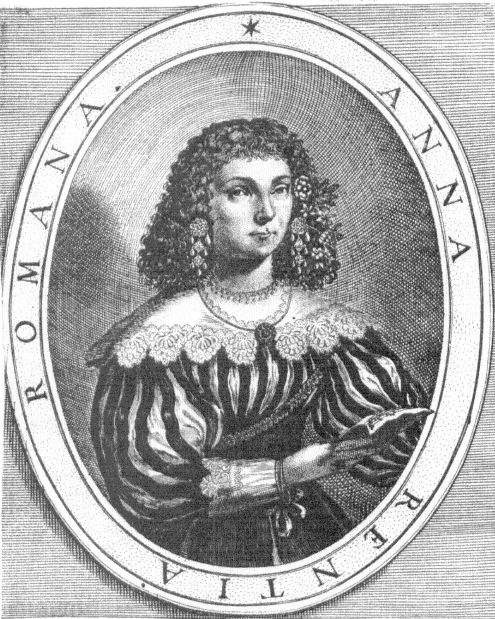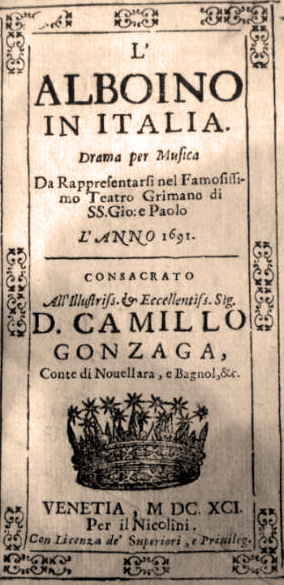Teatro Santi Giovanni E Paolo on:
[Wikipedia]
[Google]
[Amazon]
The Teatro Santi Giovanni e Paolo (often written as Teatro SS. Giovanni e Paolo) was a theatre and

 The librettist of ''La delia'',
The librettist of ''La delia'',
''Buildings for Music: the architect, the musician and the listener from the seventeenth century to the present day''
''Opera in Seventeenth-Century Venice: The Creation of a Genre''
University of California Press, 2007. *Todarello, Nazzareno L.
''Le arti della scena: Lo spettacolo in Occidente da Eschilo al trionfo dell'opera''
Latorre Editore, 2006.
opera house
An opera house is a theatre building used for performances of opera. It usually includes a stage, an orchestra pit, audience seating, and backstage facilities for costumes and building sets.
While some venues are constructed specifically for o ...
in Venice
Venice ( ; it, Venezia ; vec, Venesia or ) is a city in northeastern Italy and the capital of the Veneto Regions of Italy, region. It is built on a group of 118 small islands that are separated by canals and linked by over 400 ...
located on the Calle della Testa, and takes its name from the nearby Basilica of Santi Giovanni e Paolo, Venice. Built by the Grimani family
The House of Grimani was a prominent Venetian patrician family, including three Doges of Venice. They were active in trade, politics and later the ownership of theatres and opera-houses. Notable members included:
Notable members
* Domenico Gri ...
in 1638, in its heyday it was considered the most beautiful and comfortable theatre in the city. The theatre played an important role in the development of opera and saw the premieres of several works by Francesco Cavalli
Francesco Cavalli (born Pietro Francesco Caletti-Bruni; 14 February 1602 – 14 January 1676) was a Republic of Venice, Venetian composer, organist and singer of the early Baroque music, Baroque period. He succeeded his teacher Claudio Monteverd ...
, as well as Monteverdi
Claudio Giovanni Antonio Monteverdi (baptized 15 May 1567 – 29 November 1643) was an Italian composer, choirmaster and string player. A composer of both secular and sacred music, and a pioneer in the development of opera, he is consider ...
's ''Il ritorno d'Ulisse in patria
''Il ritorno d'Ulisse in patria'' (Stattkus-Verzeichnis, SV 325, ''The Return of Ulysses to his Homeland'') is an List of operas by Claudio Monteverdi, opera consisting of a prologue and five acts (later revised to three), set by Claudio Montever ...
'' and ''L'incoronazione di Poppea
''L'incoronazione di Poppea'' ( SV 308, ''The Coronation of Poppaea'') is an Italian opera by Claudio Monteverdi. It was Monteverdi's last opera, with a libretto by Giovanni Francesco Busenello, and was first performed at the Teatro Santi Giovanni ...
''.
History
The Grimani family originally built the theatre as a wooden structure on the Fondamenta Nuove around 1635. It was then rebuilt on a grander scale using both stone and wood in 1638 when it moved to the nearby Calle della Testa. It was built primarily for the performance of spoken drama, but from the very beginning operas were also performed there. In fact, the new theatre was inaugurated on 20 January 1639 with the premiere performance ofFrancesco Manelli
Francesco Manelli (Mannelli) ( 1595 – 1667) was a Roman Baroque composer, particularly of opera, and a theorbo player. He is most well known for his collaboration with fellow Roman composer Benedetto Ferrari in bringing commercial opera to Ve ...
's opera ''La Delia o sia La sera sposa del sole''.

 The librettist of ''La delia'',
The librettist of ''La delia'', Giulio Strozzi
Giulio Strozzi (1583 - 31 March 1652) was a Venetian poet and libretto writer. His libretti were put to music by composers like Claudio Monteverdi, Francesco Cavalli, Francesco Manelli, and Francesco Sacrati. He sometimes used the pseudonym Luigi ...
, became primarily based at the nearby Teatro Novissimo
The Teatro Novissimo was a theatre in Venice located in the Campo Santi Giovanni e Paolo with its entrance on the Calle de Mendicanti. It was the first theatre built in Venice specifically for the performance of opera. Because it was purpose-built ...
but returned to SS. Giovanni e Paolo for the 1642–1643 season, bringing with him the singers Barbara Strozzi and Anna Renzi
Anna Renzi ( – after 1661) was an Italian soprano renowned for her acting ability as well as her voice, who has been described as the first diva in the history of opera.
Career
Born in Rome, Anna Renzi was highly popular in Vienna in 1640s and ...
(who sang Ottavia in the premiere of ''L'incoronazione di Poppea
''L'incoronazione di Poppea'' ( SV 308, ''The Coronation of Poppaea'') is an Italian opera by Claudio Monteverdi. It was Monteverdi's last opera, with a libretto by Giovanni Francesco Busenello, and was first performed at the Teatro Santi Giovanni ...
'') and the pioneering set designer Giacomo Torelli
Giacomo Torelli (1 September 1608 – 17 June 1678) was an Italian stage designer, scenery painter, engineer, and architect. His work in stage design, particularly his designs of machinery for creating spectacular scenery changes and other spe ...
. According to Rosand, it may have been at Santi Giovanni e Paolo that Torelli developed his machinery for changing several sets simultaneously.
In 1654 the theatre was remodelled specifically as an opera house by the architect Carlo Fontana
Carlo Fontana (1634 or 1638–1714) was an Italian architect originating from today's Canton Ticino, who was in part responsible for the classicizing direction taken by Late Baroque Roman architecture.
Biography
There seems to be no proof tha ...
in one of his earliest commissions, and became the first fully developed horseshoe-shaped opera house in Italy, a design which remained essentially unchanged for over two centuries. Its magnificent interior could seat about 900 people with five tiers of boxes and additional seating on the U-shaped floor (or ''platea'') in front of the stage. The theatre was described in 1663 by an observer as having:
Marco Faustini Marco Faustini (17 May 1606 - 7 January 1676) was an Italian theatrical impresario and brother of the impresario and librettist Giovanni Faustini.
Biography
Marco Faustini was born in Venice. He began his career as an entrepreneur in the summer of ...
became the theatre's impresario
An impresario (from the Italian ''impresa'', "an enterprise or undertaking") is a person who organizes and often finances concerts, plays, or operas, performing a role in stage arts that is similar to that of a film or television producer.
Hist ...
in 1660, and for the next fifteen years the Teatro Santi Giovanni e Paolo and the Teatro di San Salvatore a San Luca (owned by the Vendramin family) were to be the dominant opera houses in Venice, each putting on two new operas every year.
By 1700, the Grimani family had built two more theatres in Venice, the Teatro San Samuele
Teatro San Samuele was an opera house and theatre located at the Rio del Duca, between Campo San Samuele and Campo Santo Stefano, in Venice. One of several important theatres built in that city by the Grimani family, the theatre opened in 1656 and ...
and the Teatro San Giovanni Grisostomo
The Teatro Malibran, known over its lifetime by a variety of names, beginning with the Teatro San Giovanni Grisostomo (or Crisostomo) after the nearby church,Lynn 2005, pp. 101—103 is an opera house in Venice which was inaugurated in 1678 with a ...
. An economic crisis made the Teatro Santi Giovanni e Paolo increasingly difficult to maintain, and it finally closed in 1715.Todarello (2006) p. 348. The Grimani family went on to build a fourth opera house, the Teatro San Benedetto
The Teatro San Benedetto was a theatre in Venice, particularly prominent in the operatic life of the city in the 18th and early 19th centuries. It saw the premieres of over 140 operas, including Rossini's ''L'italiana in Algeri'', and was the t ...
, in 1755.
Premieres
Operas which had their first public performance at the theatre include: *''La Delia'' byFrancesco Manelli
Francesco Manelli (Mannelli) ( 1595 – 1667) was a Roman Baroque composer, particularly of opera, and a theorbo player. He is most well known for his collaboration with fellow Roman composer Benedetto Ferrari in bringing commercial opera to Ve ...
(1639)
*''Il ritorno d'Ulisse in patria
''Il ritorno d'Ulisse in patria'' (Stattkus-Verzeichnis, SV 325, ''The Return of Ulysses to his Homeland'') is an List of operas by Claudio Monteverdi, opera consisting of a prologue and five acts (later revised to three), set by Claudio Montever ...
'' by Monteverdi (1640)
*''L'incoronazione di Poppea
''L'incoronazione di Poppea'' ( SV 308, ''The Coronation of Poppaea'') is an Italian opera by Claudio Monteverdi. It was Monteverdi's last opera, with a libretto by Giovanni Francesco Busenello, and was first performed at the Teatro Santi Giovanni ...
'' by Monteverdi (carnival season 1642/43)
*''Xerse
''Il Xerse'' ( in its 1660 French version ''Xerxès'') is an opera by Francesco Cavalli (specifically, a ''dramma per musica'') about Xerxes I. The libretto was written by Nicolò Minato, and was later set by both Giovanni Bononcini (1694, '' ...
'' by Francesco Cavalli
Francesco Cavalli (born Pietro Francesco Caletti-Bruni; 14 February 1602 – 14 January 1676) was a Republic of Venice, Venetian composer, organist and singer of the early Baroque music, Baroque period. He succeeded his teacher Claudio Monteverd ...
(1654)
*'' Statira principessa di Persia'' by Francesco Cavalli (1655, possibly 1656)
*'' Scipione affricano'' by Cavalli (1664)
*''Il Tito'' by Antonio Cesti
Pietro Marc'Antonio Cesti () (baptism 5 August 162314 October 1669), known today primarily as an Italian composer of the Baroque era, was also a singer (tenor), and organist. He was "the most celebrated Italian musician of his generation".
Biogra ...
(1666)
*''Totila
Totila, original name Baduila (died 1 July 552), was the penultimate King of the Ostrogoths, reigning from 541 to 552 AD. A skilled military and political leader, Totila reversed the tide of the Gothic War, recovering by 543 almost all the t ...
'' by Giovanni Legrenzi (1677)
*''La Gerusalemme liberata'' by Carlo Pallavicino
Carlo Pallavicino (Pallavicini; c. 1630 – 29 January 1688) was an Italian composer.
Pallavicino was born at Salò. From 1666 to 1673, he worked at the Dresden court; from 1674 to 1685, at the '' Ospedale degli Incurabili'' (a conservatory wher ...
(1687)
*''L' Alboino in Italia'' by Carlo Francesco Pollarolo
Carlo Francesco Pollarolo (ca. 1653 – 7 February 1723) was an Italian composer, organist, and music director. Known chiefly for his operas, he wrote a total of 85 of them as well as 13 oratorios. His compositional style was initially indebted t ...
(1691)
*'' Zenobia, regina de' Palmireni'' by Tomaso Albinoni, (carnival season 1694)
* ''Marsia deluso'' by Francesco Pollarolo (1713)
Notes and references
Sources
* *Forsyth, Michael''Buildings for Music: the architect, the musician and the listener from the seventeenth century to the present day''
CUP Archive
Cambridge University Press is the university press of the University of Cambridge. Granted letters patent by King Henry VIII in 1534, it is the oldest university press in the world. It is also the King's Printer.
Cambridge University Press ...
, 1985.
* Ringer, Mark, ''Opera's First Master: The Musical Dramas of Claudio Monteverdi'', Amadeus Press, 2006. .
*Rosand, Ellen''Opera in Seventeenth-Century Venice: The Creation of a Genre''
University of California Press, 2007. *Todarello, Nazzareno L.
''Le arti della scena: Lo spettacolo in Occidente da Eschilo al trionfo dell'opera''
Latorre Editore, 2006.
See also
Opera houses and theatres in Venice {{coord missing, Italy Theatres in Venice Santi Giovanni e Paolo Theatres completed in 1638 Music venues completed in 1638 1638 establishments in the Republic of Venice 1638 establishments in Italy